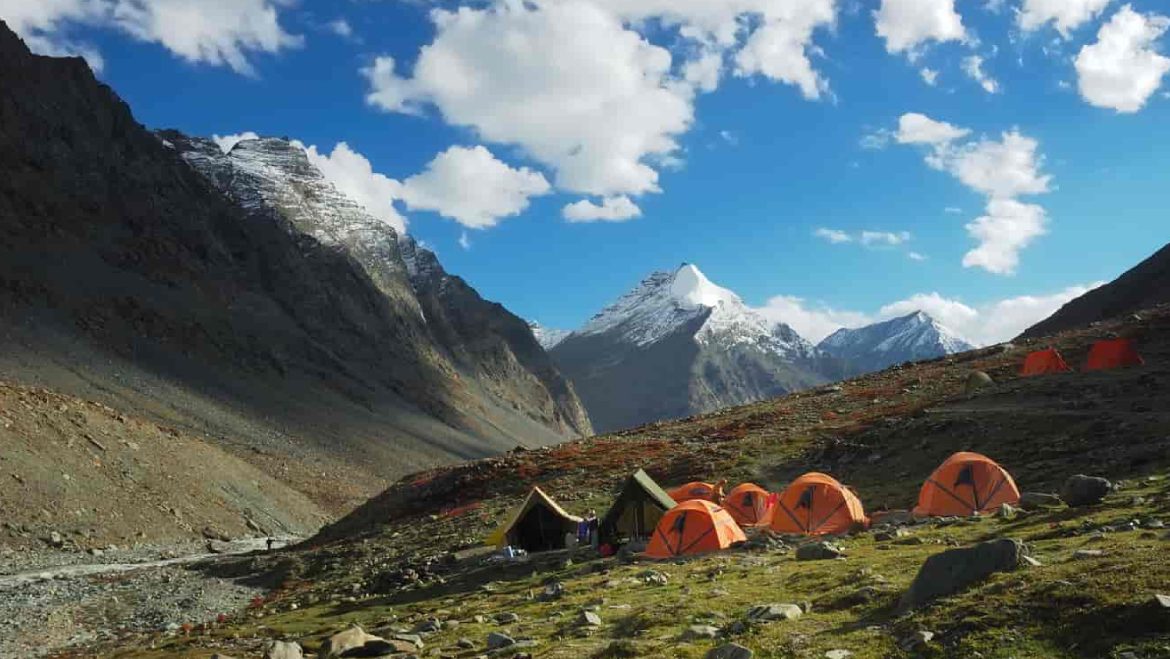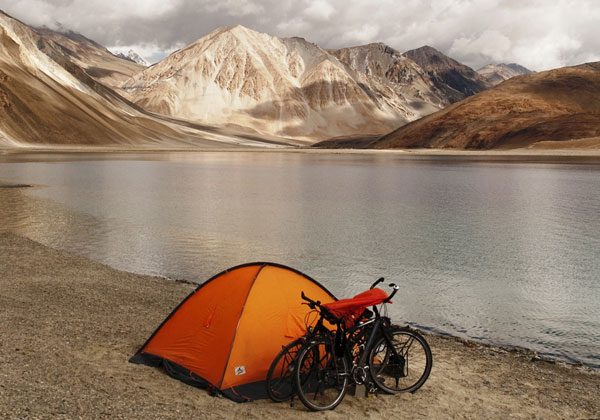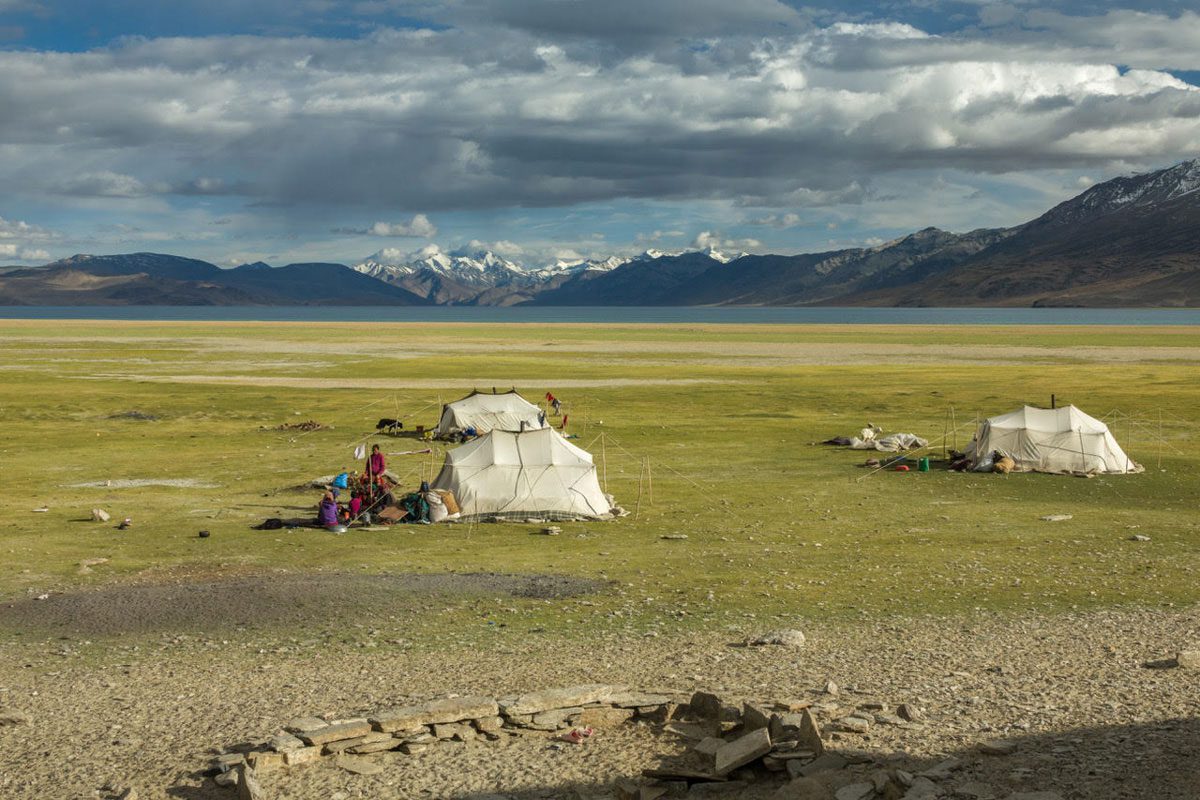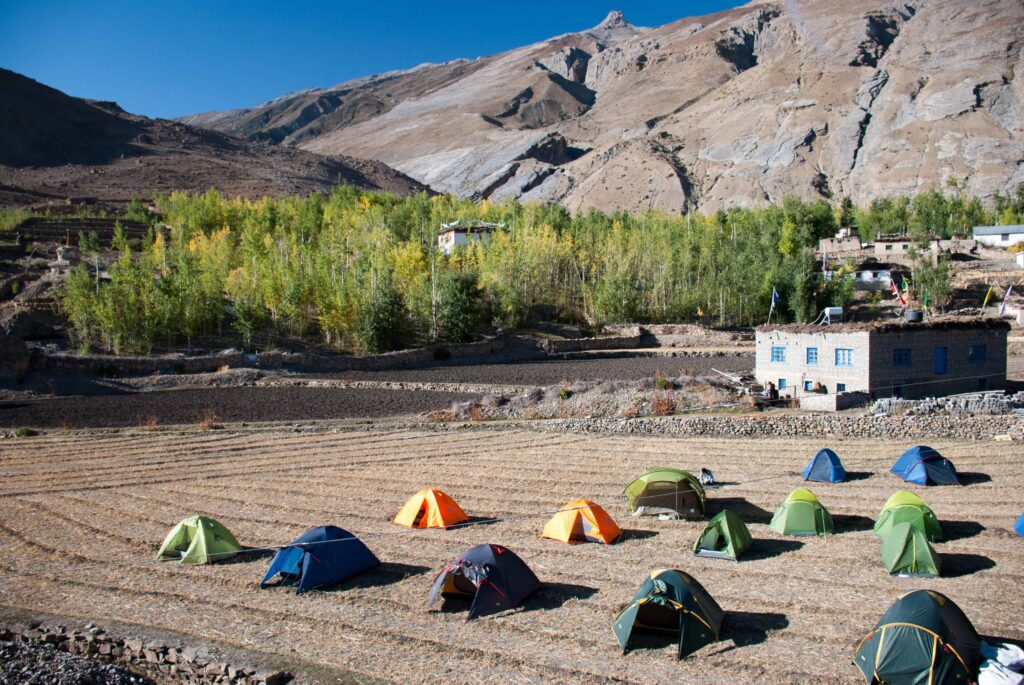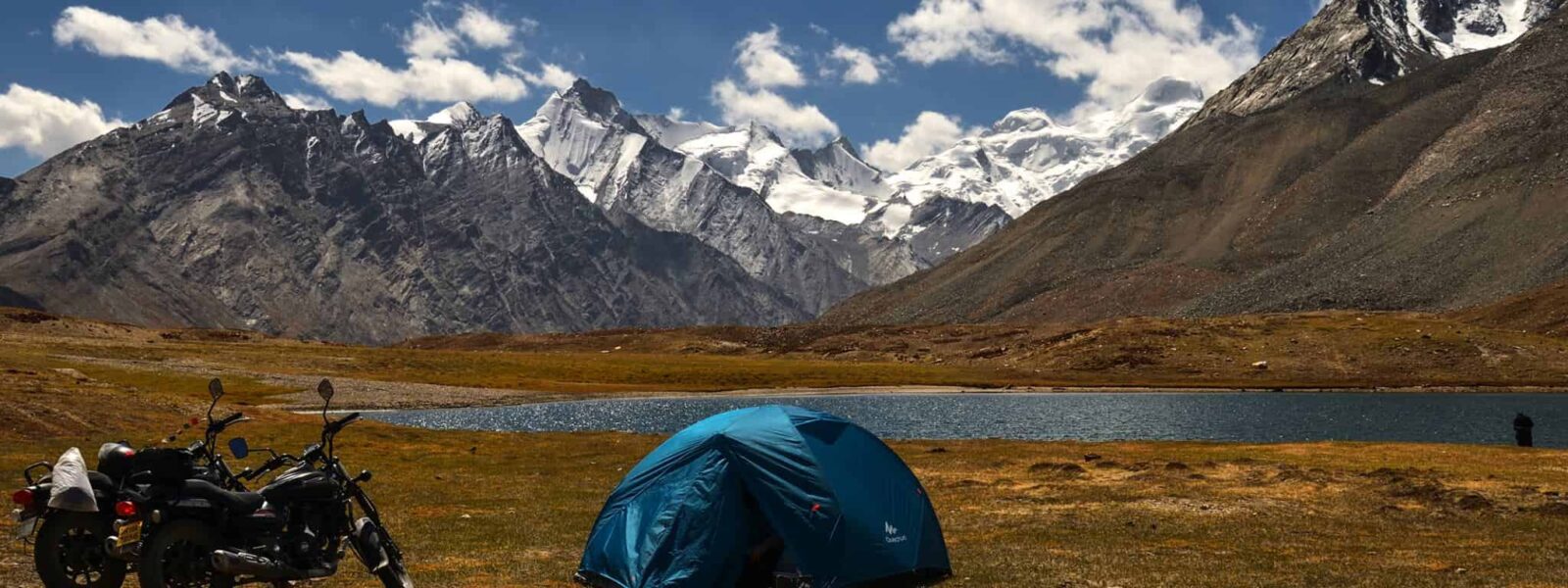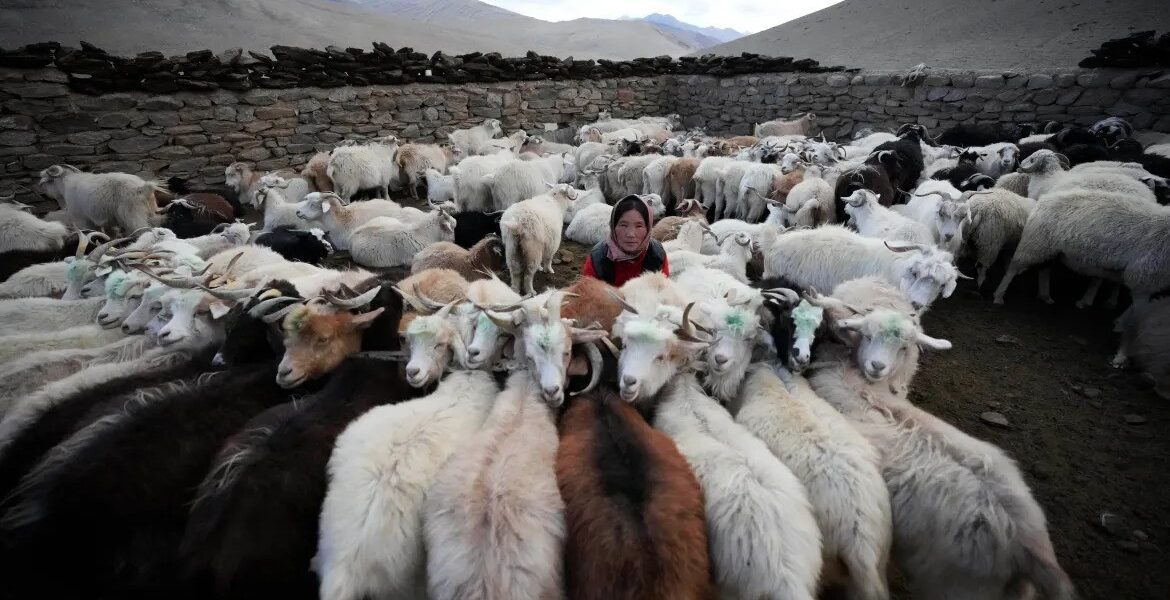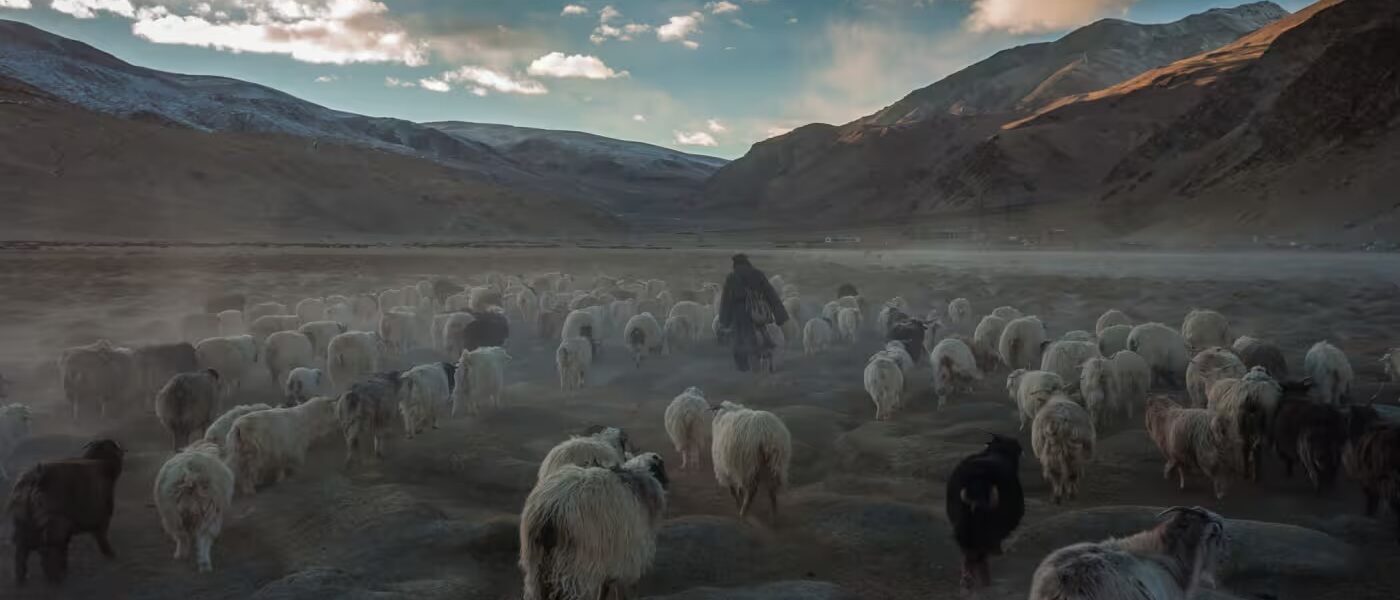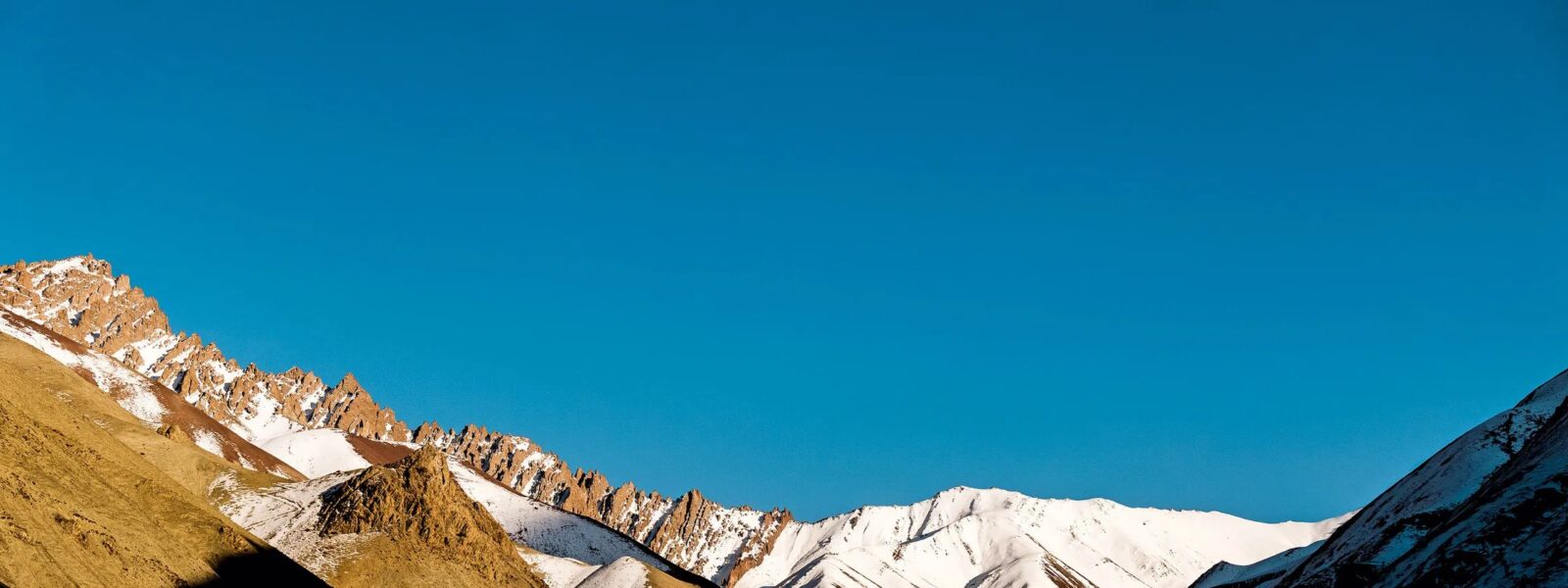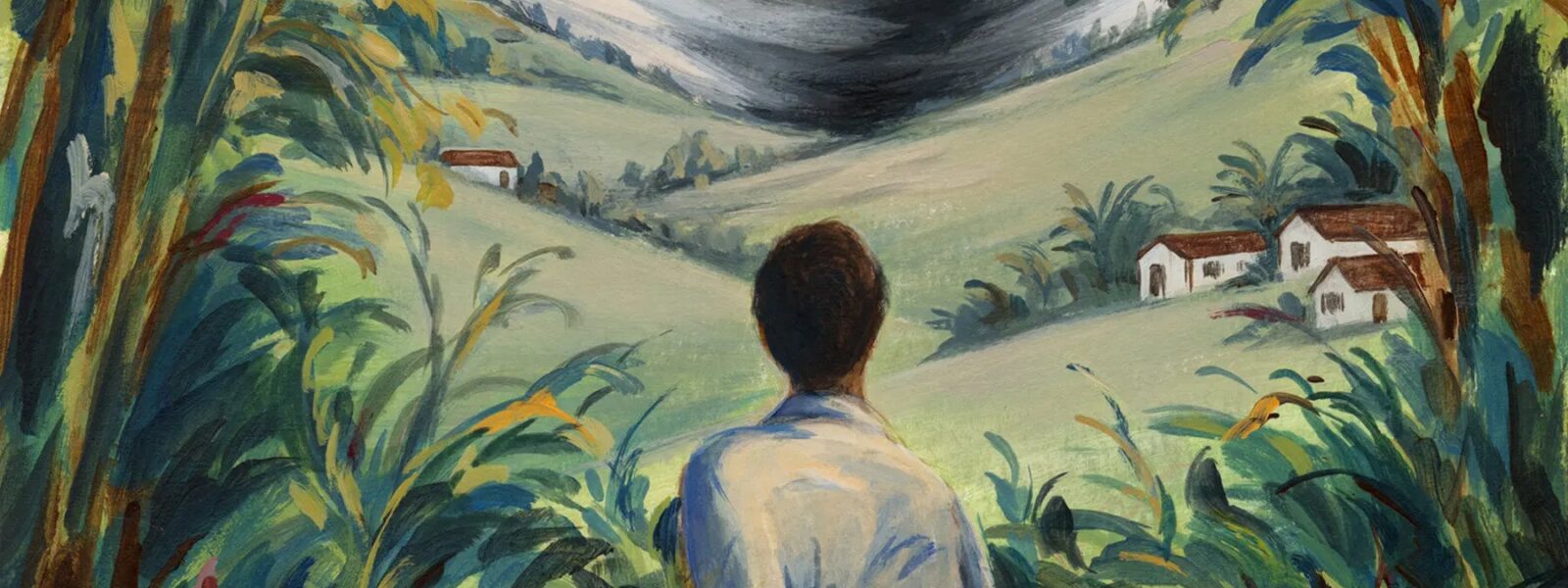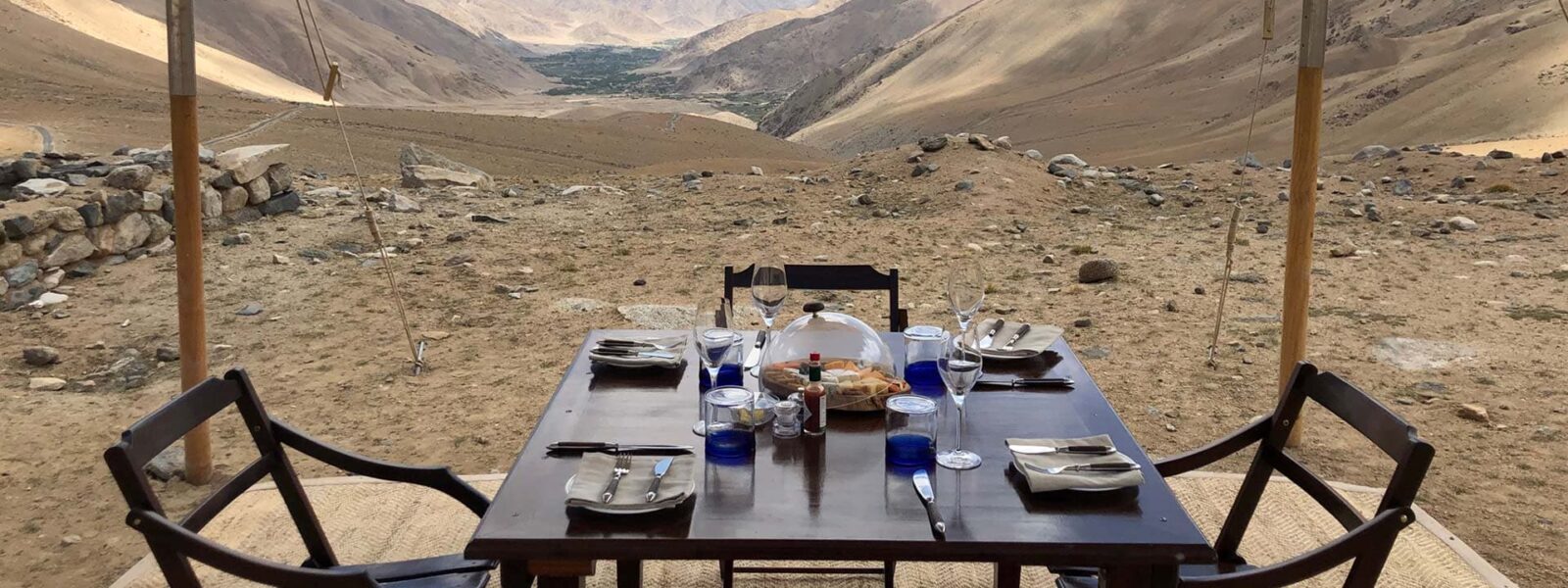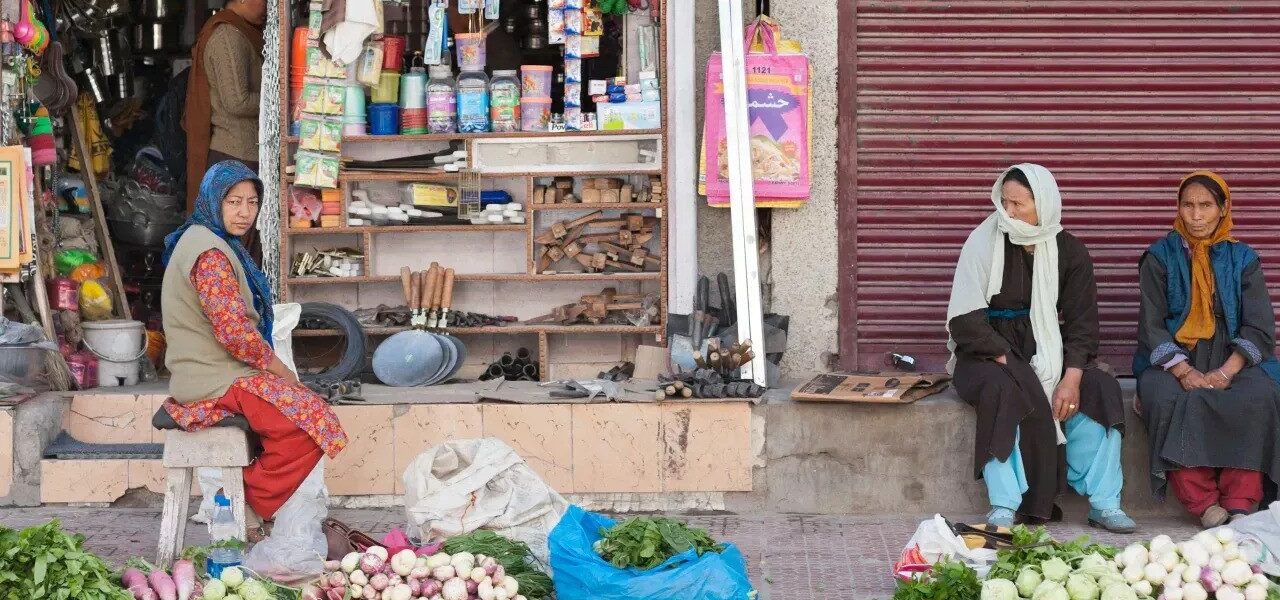Wild camping in Ladakh is an adventure that combines breathtaking landscapes, untouched wilderness, and a deep sense of solitude. For trekkers and mountaineers looking to escape the ordinary, Ladakh offers a wealth of offbeat camping spots and trails, where nature is at its most pristine and inviting. In this guide, we’ll explore the best wild camping locations, practical tips, and the unique experiences that Ladakh has to offer.
Why Ladakh is a Haven for Wild Camping and Adventure Seekers
The Rugged Charm of Ladakh’s High-Altitude Terrain
Ladakh, nestled in the Indian Himalayas, is a dream destination for adventurers. Known for its vast, rugged terrain, Ladakh’s high-altitude beauty is unparalleled. Its towering snow-capped peaks, deep valleys, and shimmering lakes offer the perfect backdrop for wild camping. The region’s remote and rugged charm attracts trekkers and mountaineers from around the globe, providing a chance to escape into the raw beauty of nature.
Unlike more popular trekking destinations, Ladakh remains relatively untouched by mass tourism, making it an ideal location for those seeking offbeat experiences. From the cold deserts of Nubra Valley to the serene waters of Tso Moriri, Ladakh’s landscapes are as diverse as they are awe-inspiring.
Experiencing Solitude and Serenity in Ladakh’s Wilderness
One of the greatest joys of wild camping in Ladakh is the sense of solitude it offers. Far from bustling cities and crowded tourist hotspots, Ladakh provides a sanctuary for those looking to reconnect with nature. The tranquil environment, combined with the crisp mountain air and star-filled night skies, creates a magical camping experience that rejuvenates both body and soul.
Moreover, Ladakh is home to unique wildlife such as snow leopards, Himalayan ibex, and migratory birds, making camping an opportunity to witness nature’s wonders up close. Whether you’re a seasoned trekker or a beginner looking for a peaceful escape, Ladakh’s wilderness has something to offer everyone.

Best Time for Wild Camping in Ladakh
Seasonal Highlights for Ladakh Camping
The best time to go wild camping in Ladakh is between May and September. During these months, the weather is relatively mild, with clear skies and comfortable temperatures that make trekking and camping enjoyable. This period also coincides with Ladakh’s summer, when the region comes alive with vibrant flora and fauna.
While summer is the most popular season, winter camping in Ladakh is also possible for those seeking a more challenging adventure. The snow-covered landscapes and frozen lakes create a surreal experience, though proper preparation and gear are essential for braving the harsh winter conditions.
What to Expect During Different Months
- May to June: The snow begins to melt, revealing lush greenery and blooming flowers in certain valleys. This is the perfect time for trekking through Sham Valley and Markha Valley.
- July to August: The peak trekking season, offering clear trails and stunning landscapes. Popular destinations like Tso Moriri and Zanskar Valley are at their best during these months.
- September: The weather starts to cool, and the autumn colors add a new dimension to Ladakh’s beauty. This is a great time for photographers and those looking to avoid the summer crowds.
Regardless of the season, always check weather forecasts and prepare accordingly, as Ladakh’s weather can be unpredictable.
Essential Gear for Wild Camping in Ladakh
Camping Gear for High-Altitude Adventures
High-altitude camping in Ladakh requires specialized gear to ensure safety and comfort. Here’s a list of essential equipment to bring:
- Four-season tent: A sturdy, insulated tent capable of withstanding high winds and cold temperatures.
- Sleeping bag: A thermal sleeping bag rated for sub-zero temperatures is a must.
- Portable stove and fuel: Cooking equipment that works well in high altitudes is essential for preparing meals.
- First-aid kit: Include altitude sickness medication, bandages, antiseptics, and other basic medical supplies.
- Layered clothing: Pack moisture-wicking base layers, insulated jackets, and waterproof outer layers to adapt to changing weather conditions.
- Navigation tools: Maps, GPS devices, or a compass will help you stay on track, especially in remote areas.
- Food and water: Carry high-calorie snacks, dehydrated meals, and water purification tablets or filters.
Packing Light While Staying Safe in the Wilderness
When trekking and camping in Ladakh, every gram in your backpack matters. To keep your load manageable:
- Opt for lightweight, multi-purpose gear.
- Rent bulky items like tents and sleeping bags in Leh to reduce your luggage.
- Carry only the essentials and plan your meals to avoid excess weight.
By packing smartly, you can enjoy your camping experience without being weighed down by unnecessary items.

Top Offbeat Wild Camping Spots in Ladakh
Tso Moriri Lake: A Tranquil Alpine Getaway
Located in the remote Changthang Plateau, Tso Moriri Lake is a hidden gem. Surrounded by rugged mountains and dotted with nomadic settlements, this lake offers a serene and peaceful camping experience. The area is also a hotspot for wildlife enthusiasts, with sightings of bar-headed geese, black-necked cranes, and Tibetan wild asses.
Zanskar Valley: Remote Camping Amidst Majestic Peaks
The Zanskar Valley is one of Ladakh’s most isolated regions, making it an ideal destination for offbeat camping. Trekkers can explore ancient monasteries, cross high-altitude passes, and camp by the banks of the Zanskar River. The valley’s raw beauty and remoteness provide a once-in-a-lifetime experience.
Nubra Valley: Camping in the Desert of the Himalayas
Nubra Valley’s unique landscapes, featuring cold desert dunes and lush green oases, create an unforgettable setting for wild camping. The valley is also home to remote villages like Diskit and Hunder, where you can experience Ladakhi culture and hospitality.
Pangong Lake: A Picturesque Escape for Nature Lovers
Famous for its vibrant blue waters, Pangong Lake is a must-visit for campers. Avoid the crowded tourist areas by exploring less-known spots along the lake. Camping here provides an excellent opportunity for stargazing and photography.
Markha Valley: Trekking and Camping Bliss
The Markha Valley trek is one of Ladakh’s most scenic routes, offering a mix of challenging trails and cultural immersion. Along the way, you’ll find idyllic campsites near rivers and traditional villages, providing a perfect balance of adventure and tranquility.
Preparing for Altitude and Weather Challenges
Managing Altitude Sickness While Camping in Ladakh
Altitude sickness is a common concern for travelers to Ladakh. To minimize the risk:
- Spend 2–3 days in Leh for acclimatization before heading to higher altitudes.
- Stay hydrated and avoid alcohol or caffeine.
- Ascend gradually and listen to your body. If symptoms like headaches or nausea occur, descend immediately.
Weather Conditions and Safety Tips for Trekkers
Ladakh’s weather can be unpredictable, with sudden changes in temperature and strong winds. Always carry extra layers, waterproof gear, and emergency supplies. Inform someone about your travel plans, and consider hiring a local guide for remote areas.

Sustainable Camping Practices in Ladakh
Leave No Trace: Protecting Ladakh’s Pristine Environment
Ladakh’s fragile ecosystem requires responsible travel. Follow these principles to minimize your impact:
- Avoid littering and pack out all waste.
- Use biodegradable soap and avoid contaminating water sources.
- Respect wildlife by keeping a safe distance and avoiding loud noises.
Supporting Local Communities Through Responsible Travel
Engage with Ladakh’s communities by staying in homestays, hiring local guides, and purchasing supplies from local businesses. This not only supports the local economy but also enriches your travel experience.
Customer Testimonial
“Camping in Ladakh was an unforgettable experience. The serene beauty of Tso Moriri Lake and the adventurous trails of Zanskar Valley made the trip extraordinary. The local guides were friendly and knowledgeable, ensuring our safety throughout the journey.” – Anna Peterson, Sweden, Environmental Scientist

FAQs About Wild Camping in Ladakh
What is the best time to go wild camping in Ladakh?
The best time is from May to September, when the weather is most favorable for camping and trekking.
Do I need a permit for camping in Ladakh?
Yes, permits are required for areas like Pangong Lake, Nubra Valley, and Tso Moriri. These can be obtained in Leh.
What should I pack for wild camping in Ladakh?
Essential items include a high-altitude tent, thermal sleeping bag, portable stove, and first-aid kit. Don’t forget water purification tablets and layered clothing.
Is camping safe for beginners in Ladakh?
Yes, beginner-friendly spots like Sham Valley and Markha Valley offer manageable trails and scenic campsites.
How can I prevent altitude sickness while camping in Ladakh?
Acclimatize properly, stay hydrated, and avoid strenuous activity during the first few days. Carry medication for altitude sickness if needed.
Can I camp near Pangong Lake or Tso Moriri?
Yes, camping near these lakes is allowed, but ensure you follow local regulations and leave no trace to protect the environment.
Conclusion
Wild camping in Ladakh is a transformative experience that combines adventure, culture, and natural beauty. By choosing offbeat spots, preparing thoroughly, and practicing sustainable travel, you can create unforgettable memories while preserving Ladakh’s pristine wilderness for future generations.
Wild Camping in Ladakh
Wild Camping in Ladakh | The journey through Ladakh mirrors the very essence of unraveling unknown horizons, as its dramatic landscapes and unique cultural identity awaken the deepest sense of wonder and exploration. Wild Camping in Ladakhdelves into this realm where inner peace intertwines with the wild, untouched beauty of Ladakh. From the snow-capped peaks to the serene monasteries, every step in Ladakh is a step toward self-discovery. The mountains, ancient paths, and unspoken mysteries stretch before travelers, offering a meditative experience where each encounter feels both effortless and transformative. Whether it’s trekking across remote valleys or sitting quietly beside a sacred lake, Ladakh invites those who seek a deeper connection to the natural and spiritual world.

Wild Camping in Ladakh
The monasteries of Ladakh stand as living monuments to the region’s profound spiritual heritage. With origins dating back over a thousand years, these ancient structures are both places of worship and repositories of art, culture, and wisdom. Hemis Monastery, one of the largest in Ladakh, is renowned for its annual festival, featuring colorful mask dances performed by monks. The history of these monasteries reflects Ladakh’s role as a crossroads between India, Tibet, and Central Asia, where religious and cultural influences have intertwined over the centuries.
The Tibetan Buddhist influence is especially evident in the architecture and daily life of the monks. Prayer wheels, intricate murals, and the soft hum of chants fill the air as visitors explore the monastery grounds. Each monastery, from the remote Lamayuru to the awe-inspiring Thiksey, offers a window into the spiritual heart of Ladakh. These centers of meditation, learning, and community life continue to thrive, preserving traditions that have shaped Ladakh for generations.
Wild Camping in Ladakhfor Wild Camping in Ladakh?
Ladakh is a destination that transcends mere travel. It offers a journey that touches both the outer and inner landscapes, making it a perfect setting for those who seek to unravel their own unknown horizons. The region’s breathtaking scenery—from towering mountain ranges to hidden valleys—provides not just an escape but a space for contemplation and growth. Ladakh’s culture, deeply rooted in Buddhist practices, invites visitors to reflect on their own lives and the world around them.
Ladakh’s people, known for their warmth and hospitality, add to the richness of the experience. Villages like Sumda Chun and the legendary Nubra Valley introduce travelers to a way of life that is intricately connected to nature and spirituality. Staying in local homestays allows for immersive experiences where one can learn about traditional Ladakhi customs, share meals made from local produce, and participate in community rituals.

Beyond its natural beauty, Ladakh offers a unique opportunity to explore oneself. The vastness of the region’s plateaus and the clarity of its skies seem to mirror the vastness of the human spirit. Whether it’s standing atop a mountain pass at 18,000 feet or meditating in a centuries-old monastery, Ladakh helps unravel the unknown horizons within each traveler.
Finding the Best Wild Camping in Ladakhin Ladakh
Finding the best places in Ladakh to experience “Wild Camping in Ladakh” involves venturing off the beaten path. Ladakh’s lesser-known treks, such as those leading to secluded monasteries or high-altitude lakes, offer unparalleled opportunities for solitude and reflection. The Markha Valley trek, for instance, takes travelers through verdant valleys, ancient villages, and high-altitude passes, allowing for both physical and spiritual exploration.
Ladakh’s iconic lakes, including Pangong Tso and Tso Moriri, are ideal spots for quiet contemplation. Their still waters reflect the sky, creating a mesmerizing landscape that feels timeless and infinite. Sitting beside these lakes, especially at dawn or dusk, brings an overwhelming sense of peace and connection with nature.

For those interested in Ladakh’s spiritual heritage, exploring monasteries such as Alchi, Phyang, or Diskit can be a transformative experience. These sites are not just places of worship but also centers of art, philosophy, and wisdom. Visiting these monasteries, with their ancient murals and intricate statues, offers insight into Ladakh’s rich cultural tapestry.
Ladakh’s Atmosphere and Wild Camping in Ladakh
Ladakh’s atmosphere is unlike any other place on Earth. The stark contrasts between the rugged mountains and the serene, tranquil monasteries create an environment that feels both raw and sacred. The traditional decor in Ladakhi homes and religious sites reflects this balance, with mud-brick houses adorned with prayer flags and colorful thangkas (Buddhist paintings) that add warmth and spiritual meaning to the space.

The interiors of Ladakhi homes, often simple and functional, are filled with symbols of devotion. Small shrines dedicated to Buddhist deities are common, and the air is often fragrant with incense. The use of earthy materials, like stone and wood, along with brightly colored textiles, creates an inviting and peaceful space, perfect for relaxation and reflection.
Traditional Wild Camping in Ladakh
Traditional Wild Camping in Ladakhis an integral part of the region’s identity, offering a unique blend of flavors that reflect its harsh climate and remote location. Hearty, warming dishes such as thukpa (noodle soup) and momos (dumplings) provide the sustenance needed to endure Ladakh’s cold temperatures. Skyu, a thick stew made with root vegetables and barley, is another staple of the Ladakhi diet, designed to nourish both body and spirit.

Drinks like butter tea, made with yak butter and salt, are a must-try for anyone visiting Ladakh. This rich, savory drink is not only warming but also hydrating, making it essential for those venturing into the high-altitude regions of Ladakh. Chang, a local barley beer, is often enjoyed during festivals and community gatherings, adding a sense of joy and camaraderie to any occasion.
Live Cultural Wild Camping in Ladakhin Ladakh
Ladakh is home to a vibrant cultural scene, with festivals and live performances held throughout the year. The Hemis Festival, which celebrates the birth of Guru Padmasambhava, is one of the largest and most famous events in the region. Monks dressed in elaborate costumes perform cham dances, which depict the triumph of good over evil. The energy of the festival, with its bright colors, rhythmic music, and elaborate rituals, draws visitors from around the world.
Other local festivals, such as the Losar (New Year) and Ladakh Festival, provide visitors with the chance to witness traditional dance, music, and crafts that have been passed down through generations. These events are more than just entertainment; they are a celebration of Ladakh’s rich cultural heritage and its deep connection to the spiritual world.
Trekking and Outdoor Activities Wild Camping in Ladakh
Ladakh is a trekker’s paradise, offering some of the most stunning and challenging routes in the world. From the famous Wild Camping in Ladakh, which follows the frozen Zanskar River, to lesser-known routes like the Sham Valley or Nubra Valley treks, Ladakh’s landscape offers endless possibilities for adventure and discovery. The high-altitude passes, such as Khardung La and Chang La, offer breathtaking views of snow-capped peaks and sprawling valleys.

Wildlife enthusiasts will also find Wild Camping in Ladakhto be a haven for rare species such as the Ladakh Urial, Himalayan Spituk Gustor Festival, and the Spituk Gustor Festival. Winter expeditions to spot the elusive Wild Camping in Ladakhin the Hemis National Park are gaining popularity among wildlife photographers and conservationists alike.
The Importance of Preserving Ladakh’s Wild Camping in Ladakh
Ladakh’s rich cultural and environmental Wild Camping in Ladakhis under increasing threat from climate change and mass tourism. Preserving this unique region requires careful attention to sustainable tourism practices. Choosing eco-friendly accommodations, supporting local businesses, and participating in community-led conservation efforts are just a few ways that visitors can contribute to the preservation of Ladakh’s natural and cultural heritage.
Ladakh’s people have a long history of living in harmony with their environment, practicing sustainable agriculture, and maintaining a deep spiritual connection to the land. Visitors are encouraged to follow the same principles, leaving no trace and respecting the fragile ecosystems that make Ladakh so special.
Etiquette and Tips for Visiting Wild Camping in Ladakh
Before visiting Ladakh, it’s essential to understand and respect the region’s customs and traditions. As a deeply spiritual place, Ladakh requires visitors to dress modestly, especially when visiting monasteries or attending religious ceremonies. Always ask for permission before taking photographs inside monasteries or of local people.
Medical Wild Camping in Ladakh
Spa trail Wild Camping in Ladakh
Wild Camping in Ladakh

When Wild Camping in Ladakh, remember to stay on designated paths to avoid damaging fragile ecosystems. Tipping is appreciated but not expected in most settings, and it’s important to carry cash, as many remote areas do not accept credit cards. Lastly, be mindful of altitude sickness and take the necessary precautions when traveling to higher elevations.
Conclusion: Enjoying Wild Camping in Ladakhin Ladakh
Ladakh is a place where the physical and spiritual worlds converge, offering travelers a journey unlike any other. Whether you’re trekking across high-altitude deserts, exploring ancient monasteries, or simply sitting in quiet reflection by a mountain lake, Ladakh invites you to unravel your own unknown horizons. By respecting the region’s traditions and practicing sustainable tourism, you help ensure that Ladakh’s beauty and cultural richness will be preserved for future generations to explore and enjoy.
